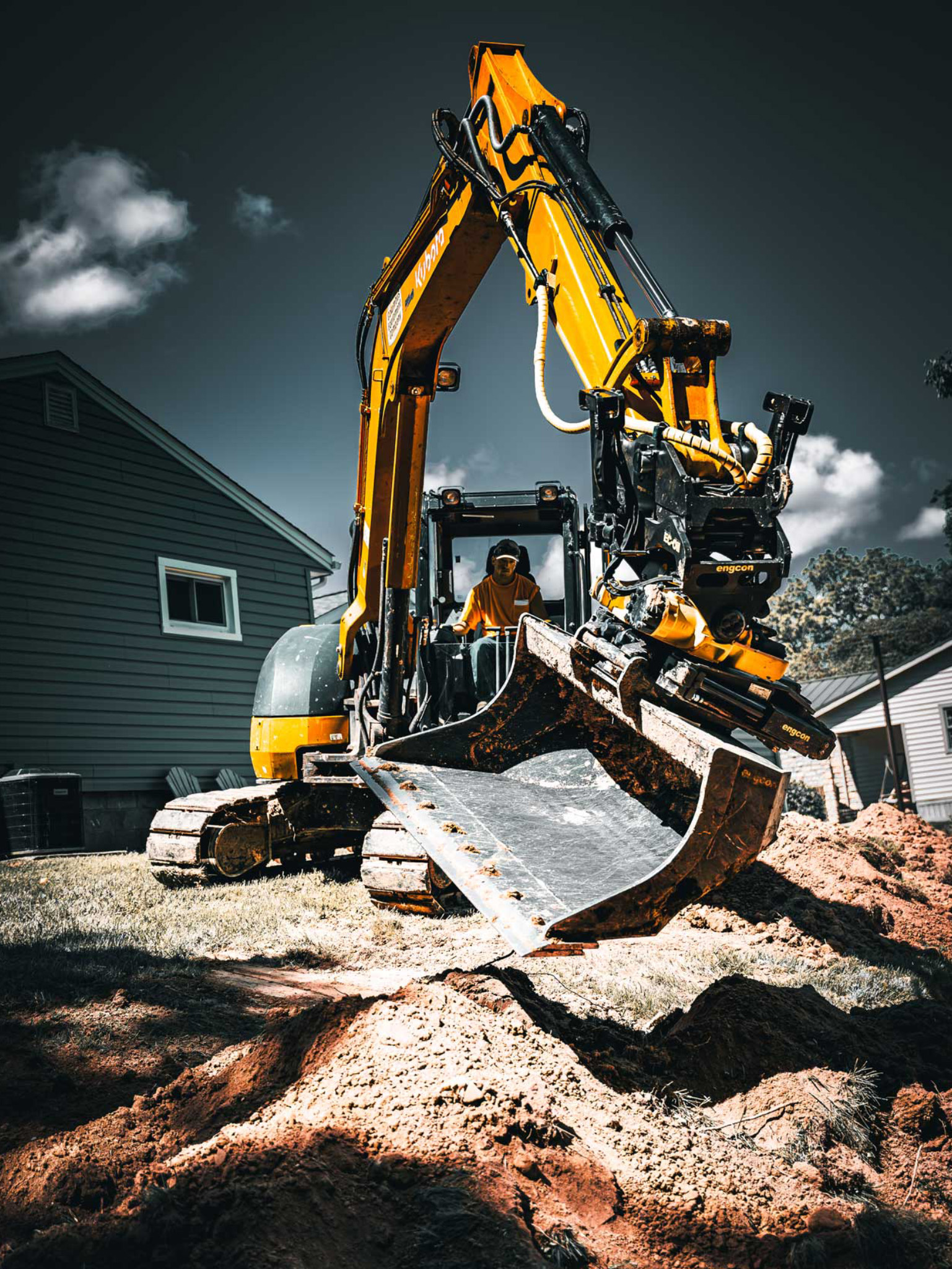Residential Excavating Ohio - Specialized Excavation for Ohio Houses
Residential Excavating Ohio - Specialized Excavation for Ohio Houses
Blog Article
Comprehensive Exploration: The Science Behind Superior Excavation Practices
The world of excavation practices is a domain where science links with craftsmanship to unearth the secrets concealed under the earth's surface. From ancient hand devices to modern-day hydraulic excavators, the evolution of excavation techniques has been a testimony to human ingenuity and technical developments. Nonetheless, what truly sets exceptional excavation methods apart is a deep understanding of geological concepts, paired with the application of cutting-edge devices and methodologies. By discovering the scientific research behind these methods, we can uncover the secrets that exist under our feet and value the accuracy and knowledge that go right into every dig.
Evolution of Excavation Methods
Throughout background, the evolution of excavation strategies has played a critical duty ahead of time building and construction methods and archaeological explorations. From the basic devices utilized by our forefathers to the advanced machinery utilized in modern times, the development of excavation methods has actually dramatically transformed just how we approach numerous jobs.
In old times, hands-on labor with standard tools such as pickaxes, wheelbarrows, and shovels was the primary approach of excavation. This labor-intensive process restricted the deepness and scope of excavations, often leading to slow-moving development and limited access to particular sites. As worlds progressed, so did the devices and methods used for excavation.
The Industrial Change marked a transforming point in excavation practices with the introduction of steam-powered machinery. In contemporary times, technology plays a critical duty in excavation, with innovations like General practitioner systems, drones, and 3D scanning improving precision and effectiveness in the area.
Function of Innovation in Excavation

The assimilation of innovative technology has basically transformed the field of excavation, enhancing accuracy and performance to unmatched degrees. One of the crucial technical improvements that has significantly influenced excavation methods is the usage of GPS systems. These systems enable accurate mapping of excavation websites, making it possible for operators to properly find below ground energies and structures. Furthermore, the use of telematics in excavation tools has actually enabled real-time monitoring of equipment performance, leading to proactive maintenance and enhanced operational productivity.
Furthermore, the advent of 3D modeling and simulation software program has streamlined the preparation process for excavation projects. Designers and operators can now visualize the whole excavation process before breaking ground, optimizing and determining possible obstacles workflow. Together with this, the execution of drones in excavation activities has promoted aerial surveys, volumetric dimensions, and site examinations with unrivaled rate and accuracy.
Geological Principles in Excavation
An understanding of geological concepts is crucial for ensuring the architectural honesty and stability of excavation websites. Geological aspects play a vital duty in determining Click Here the feasibility and safety of excavation projects (lancaster excavation). One essential geological principle to think about is the sort of dirt or rock existing at the website. Various soil types, such as clay, gravel, or sand, have varying levels of security and call for various excavation methods. Cohesive soils like clay may require additional support to avoid collapses, while sandy soils may be susceptible to disintegration throughout excavation.
By conducting comprehensive geological surveys and analysis, excavators and engineers can establish techniques to alleviate risks and guarantee the successful conclusion of excavation projects. Ultimately, including geological principles into excavation methods is essential for attaining risk-free, efficient, and sustainable outcomes.

Latest Tools for Excavation
In the realm of excavation methods, modern technologies in devices have actually reinvented the performance and accuracy of excavation processes. One of the most recent tools making waves in the sector is making use of drones equipped with innovative imaging technology. These drones can offer comprehensive airborne studies of excavation sites, providing that site real-time information on topography and possible risks. This information help in far better planning and decision-making during the excavation procedure.
Another cutting-edge device getting popularity is the execution of 3D printing innovation for creating personalized excavation devices. This enables the manufacturing of specialized devices that are tailored to the specific requirements of a task, boosting effectiveness and reducing downtime.
Moreover, developments in products science have brought about the advancement of stronger and extra long lasting excavation tools. excavating ohio. Tungsten carbide-tipped excavator add-ons, as an example, deal superior efficiency in challenging ground conditions, boosting productivity on-site
Scientific research's Impact on Excavation Practices

Additionally, scientific study on dirt technicians and geotechnical engineering has actually supplied important understandings right into soil actions, enabling excavation experts to make informed choices concerning excavation approaches and soil stablizing techniques. Generally, science continues to drive innovation and enhancement in excavation practices, making excavation jobs extra efficient, affordable, and lasting.

Verdict
To conclude, the development of excavation strategies has actually been substantially affected by innovations in technology and a much deeper understanding of geological concepts. The current tools and tools made use of in excavation have actually enhanced performance and accuracy in the field. The application of scientific expertise has actually substantially enhanced excavation techniques, causing more lasting and efficient methods for digging deep into various kinds of materials.
In the realm of excavation practices, modern advancements in devices have revolutionized the performance and accuracy of excavation processes. By leveraging scientific concepts, the excavation industry has been able to dramatically enhance performance, precision, and security in excavation Learn More Here procedures. GPR enables excavation groups to non-invasively scan and map subsurface structures, energies, and potential risks, enabling them to intend excavation tasks with higher accuracy and lowered threat of accidents.
Furthermore, clinical research on dirt mechanics and geotechnical engineering has provided beneficial insights right into soil behavior, permitting excavation professionals to make enlightened decisions concerning excavation approaches and soil stabilization methods. In general, science proceeds to drive technology and enhancement in excavation practices, making excavation tasks a lot more effective, affordable, and lasting.
Report this page